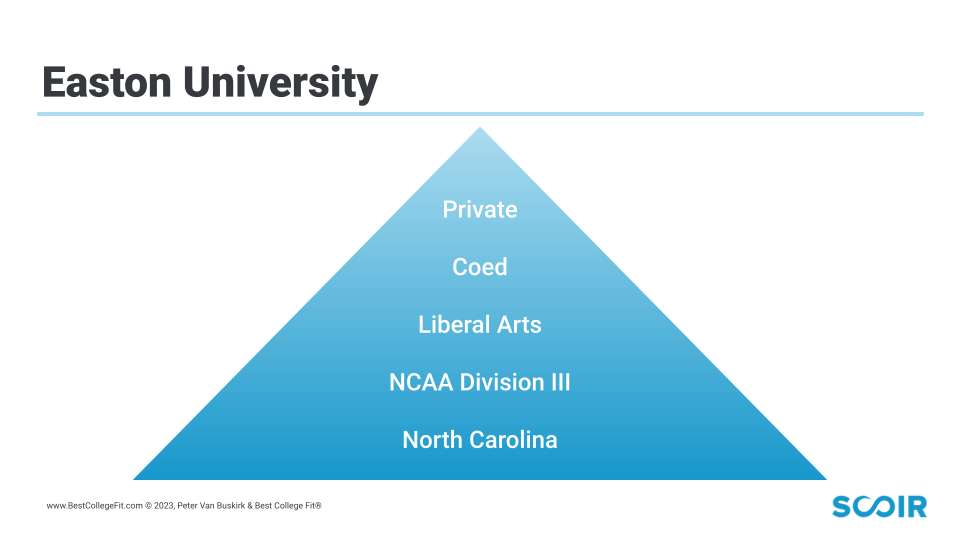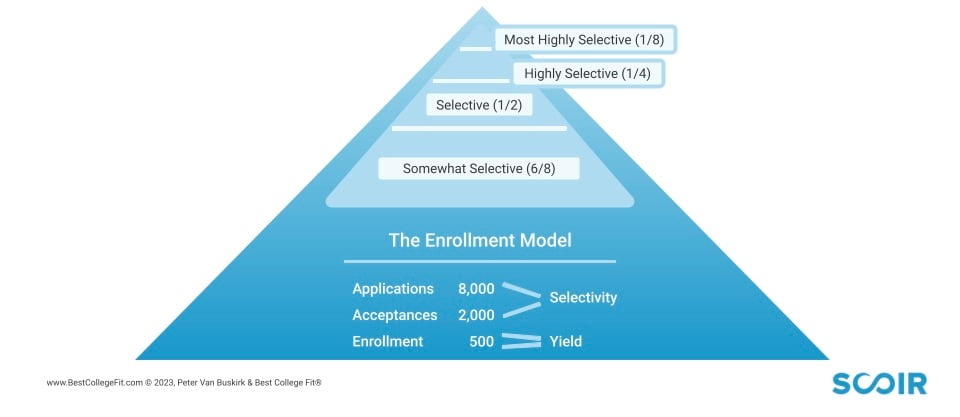4 min read
ACT and SAT Must-Knows for High Schoolers
We recently published a podcast episode on this topic. This blog post provides a recap of what we covered during the episode. Hi! It’s Abby from...
Free for students & their families
Seamlessly integrated, affordable systems for use across your district.
Career Readiness for 6-8 grade, built to guide and track progress in the early years of career exploration.
Scoir + Common App are integrated for the 2025-26 academic year!
Check out content and practical guides to help inform your enrollment strategies and programs.
3 min read
Abby deSilva
:
October 11, 2023

College applications are full of opportunities to stand out. The classes you chose to take, your standardized test score, your extracurricular experience, your essay...
When I was in high school, I thought about all the ways I could miss the mark on my college application. I encourage you to think of every aspect of your college application as an opportunity instead!
Now, you may be wondering...should I focus on a specific part of my application? How can I stand out amongst thousands of other applications?
Wonder no more! We sat down with Peter Van Buskirk, former dean of admission with over 25 years of experience, to show you what behind the scenes of college admissions looks like. You'll get a sense of what they're looking for in your college application.
You can read this blog post for the gist, or watch the full event replay.
During the webinar, Peter walks through a fictional admission process while sorting through theoretical, potential students trying to get into “Easton University.” Easton is a fake, private, co-ed, liberal arts, NCAA Division III college located in North Carolina. Before sorting through which applicants Easton will accept, Peter walks through the ins and outs of the admissions process. We recommend watching it to get a sense of how college admissions folks review applications.
A college rep will spend just a few minutes with your application. They have thousands upon thousands of applications to go through. What would you like to see if you were in their shoes?

During the webinar, Peter introduces the “The Pyramid of Selectivity” concept, a framework that dissects the various labels colleges use to describe themselves, ranging from "Most Highly Selective" to "Highly Selective," "Selective," and "Somewhat Selective."
Every college falls into one of these buckets. When you're looking at (or putting together) your college list, think about where each college might fall. Ivy league colleges, for instance, are generally the most highly selective.

Regardless of where a college stands on this pyramid, your paramount focus should be on finding the right fit for you. The ideal institution for you is one that truly appreciates your unique qualities and values what you bring to the table. It's crucial to consider your position on the competitive spectrum, whether you're closer to PBK (Pi Beta Kappa, Dean's list/Honor roll) or JGB (Just Getting By). This self-awareness aids in setting realistic expectations during the college application process.
Pro tip: Peter strongly advises targeting schools where you occupy the upper half of the playing field, ensuring a better chance of success and compatibility.
In the world of college admissions, there are two distinct agendas at play.
The first is the overt agenda, where colleges seek out students who are...
Each applicant's unique gifts and talents are carefully scrutinized. Help colleges understand the value you'll bring to their campus. Are you a leader? How do you help others? What ideas do you have?
Then, colleges have what Peter calls a hidden agenda. It revolves around financial considerations, the likelihood of an applicant actually enrolling if accepted, and their SAT or ACT score. Colleges are acutely aware of the return on investment they can expect from students based on their financial status, which plays a pivotal role in the admissions process. Plus, the chances of an applicant actually committing to a college after acceptance are evaluated.
The SAT and ACT are also still a crucial factor in the equation. They serve as a tool for decision-makers to gauge a student's potential for success in their first year of college. Colleges are cautious about admitting students who may lack the motivation and resilience necessary for success, making an impressive SAT score a valuable asset in the application process. Peter advises applicants to try both tests to determine which one best showcases their value and knowledge. He also recommends taking each test at least three times, as studies suggest that students tend to improve their scores with each attempt. Plus, some colleges allow superscoring, which allows you to take your highest score per section across multiple testing attempts.
Keep in mind, it is your choice what you submit to colleges. You get to decide what they see and when!
The college admissions process is complex and multifaceted, with numerous factors that can set you apart from the competition. We hope this event helps you build confidence and a clearer sense of how to stand out in the eyes of admissions offices.
Be sure to check out the recorded event to see who makes it into Easton and why!
This article was originally published on October 11, 2023. It was updated on December 22, 2025 for accuracy and comprehensiveness.
Abby deSilva is the Inbound Marketing Strategist at Scoir. She loves creating content and helping students find their dream college and career.

4 min read
We recently published a podcast episode on this topic. This blog post provides a recap of what we covered during the episode. Hi! It’s Abby from...

6 min read
Gaining admission to the college(s) of your choice might weigh heavily on your mind at the moment. The odds are that the prospect of affording...

8 min read
The Free Application for Federal Student Aid (FAFSA), managed by the Department of Education, is the gateway to federal and state financial aid for...